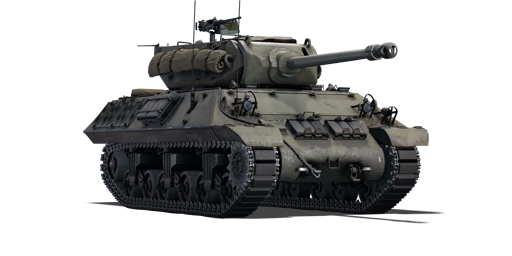



The Achilles was the name given by the British to the American M10 Tank Destroyers. Britain received about 1,650 M10s from the US. It was so called for both the 3-inch gun variant (Achilles I/II) and the variant mounting the 17-pounder (Achilles Ic / IIc), though in most usage, the vehicle was called the 17pdr M10, or 17pdr SP M10, or even the "Firefly", despite that name being used for a different design. Around 1943, M10s were converted to increase its firepower against the gradually upgraded German tank designs such as the Tiger I and the Panthers. The conversion used one of the best Allied anti-tank guns at the time, the 17-pounder, which could penetrate about 140 mm of armour at 500 m away with APCBC rounds, and 209 mm at the same distance with APDS rounds. In the end, about a total of 1,000 Achilles were converted into 17-pounder variants by the end of World War II, making the M10 Achilles the second-most numerous design to mount the 17-pounder, after the Sherman Firefly.
It was introduced in Update 1.55 "Royal Armour" along with the rest of the initial British Ground Forces Tree. The Achilles is based on the American M10, but carries 17-pounder as the main armament, making it an effective tank destroyer. At its BR, the Achilles has plenty of firepower, especially once the Mk.8 APCBC shot modules is unlocked. The 17-pdr is enough to deal with the Panzer III and IV, since it lacks APHE shells try to aim vital points to cause the maximum damage. The T-34 is a bigger problem due to its sloped armour. When facing Russians, the first shot should always be to the gunner. The Mk.8 APCBC is quite able to penetrate the T-34 glacis even from a distance but keep in mind that the damage the 17-pdr will cause is unreliable due to the lack of APHE. The M10 mobility is not outstanding, but the Achilles is pretty capable of carrying the player, gun, and event team where it needs to go. Protection is not good. The sloped armour and the track links added to the front will protect the Achilles from some low calibre shots, but the vast majority of enemies will be able to destroy the Achilles quickly. The frontal turret armour may be able to bounce or survive some hits from heavier weapons, but this is inconsistent at best. Side armour is paper thin. The high profile and the very slow turret traverse are not suitable for close range combat so avoid deep flanking tactics.
| Ammunition | Type | Armor penetration (mm) at a distance: | |||||
|---|---|---|---|---|---|---|---|
| 10 m | 100 m | 500 m | 1000 m | 1500 m | 2000 m | ||
| AP | 171 | 168 | 155 | 139 | 126 | 113 | |
| HE | 20 | 20 | 18 | 16 | 15 | 13 | |
| APC | 171 | 168 | 155 | 139 | 126 | 113 | |
| APCBC | 190 | 187 | 172 | 155 | 140 | 126 | |
| Smoke | 3 | 3 | 3 | 3 | 3 | 3 | |
| Belt | Belt filling | Armor penetration (mm) at a distance: | |||||
|---|---|---|---|---|---|---|---|
| 10 m | 100 m | 500 m | 1000 m | 1500 m | 2000 m | ||
| API-T/I/AP/API-T | 31 | 29 | 21 | 14 | 9 | 6 | |












Mobility | |
|---|---|
Protection |
|---|
Firepower | |
|---|---|